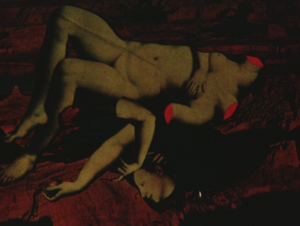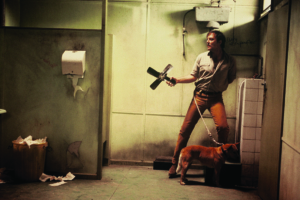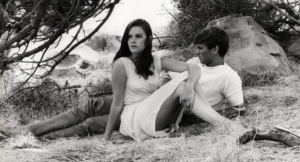The Future of the Musical Biopic
Todd Haynes’ film about the life of Bob Dylan eschews the route taken by more traditional entries in the biopic genre, writes Penny Spirou.
Sometimes you say things in songs even if there’s a small chance of them being true. And sometimes you say things that have nothing to do with the truth of what you want to say and sometimes you say things that everyone knows to be true. then again, at the same time, you’re thinking that the only truth on earth is that there is no truth on it.[1]Bob Dylan, Chronicles: Volume One, Simon & Schuster, London, 2004, p.20.
Bob Dylan’s own thoughts on the idea of truth reflect the difficulties contemporary filmmakers face when they bring the life narrative of a musical individual to the screen. It is difficult (and perhaps even impossible) to produce an accurate audio-visual account of a popular musician’s biography; hence there are musical biopics[2]A ‘biopic’ is simply a biographical film. A musical biopic is defined here as a film that focuses on an individual associated with music. Individuals include musicians, composers, singers and performer/entertainers. that offer a range of different perspectives through narrative intertextuality and musical integration.
I’m Not There (Todd Haynes, 2007) is a feature film inspired by the life and music of Bob Dylan, and it is part of the musical biopic boom of the early twenty-first century[3]Musical biopics released during the boom include Ray (Taylor Hackford, 2004), De-Lovely (Irwin Winkler, 2004), Walk the Line (James Mangold, 2005) and Beyond the Sea (Kevin Spacey, 2004) in Hollywood alone. – the Runaways (Floria Sigismondi, 2010), Nowhere Boy (Sam Taylor–Wood, 2009), Notorious (George Tillman Jr., 2009) and Cadillac Records (Darnell Martin, 2008) are the most recent entries in the genre. But I’m Not There is the first musician biopic to represent one individual through multiple characters. Each symbolises a period/style of Dylan’s music, as well as his personal interests and various representations in the media. The film is also unusual in that it steers away from the simple linear narrative structure of the biopic; instead, disjointed narratives reflect the Dylan personae.
The use of several characters to represent different facets of an individual highlights what Haynes sees as Dylan’s refusal to be reduced to a single identity. Talking about Dylan and the choice to use multiple characters in the film, Haynes says:
He really is about all of these absolutely total commitments to this era or that or the musical or the political landscape … Or not. And the fact that he didn’t stay in any of them and continued to redefine himself that has created this sense of the elusive mystery man. In many ways the film has the misshape of a life that has detours and oppositions and diversions and self-betrayals and denials and all the things that we all do to get through life.[4]Shawn Levy, ‘Interview: Todd Haynes on “I’m Not There”’, OregonLive.com, 18 November 2007<http://blog.oregonlive.com/madaboutmovies/2007/11/interview_todd_haynes_on_im_no.html>, accessed 9 September 2009.
Haynes also suggests that Dylan’s chameleon-like nature was a response to the rapidly changing socio-political climate of the United States in the 1960s. ‘It was an unbelievable rate of change and rate of learning, and he was literally ahead.’[5]op. cit.
Dylan as postmodern chameleon is represented by the characters in I’m Not There: French poet Arthur Rimbaud (Ben Whishaw) reflects Dylan’s own poetry and his interest in Rimbaud’s artistry; Jack Rollins (Christian Bale) represents the period when Dylan wrote and performed his protest songs such as ‘The Lonesome Death of Hattie Carroll’[6]Bob Dylan, The Times They are A Changin’, Columbia, 1964. The album also features songs such as ‘Only a Pawn in Their Game’ and the album title song that Jack Rollins performs in the film.; Billy the Kid (Richard Gere) indicates Dylan’s interest in western genre films and his acting appearance in Pat Garrett and Billy the Kid (Sam Peckinpah, 1973); Woody Guthrie (Marcus Carl Franklin) marks Dylan’s early music career, playing the songs of folk singer Guthrie; and Robbie Clark (Heath Ledger) points to Dylan’s personal relationships and the impact these had on his career.
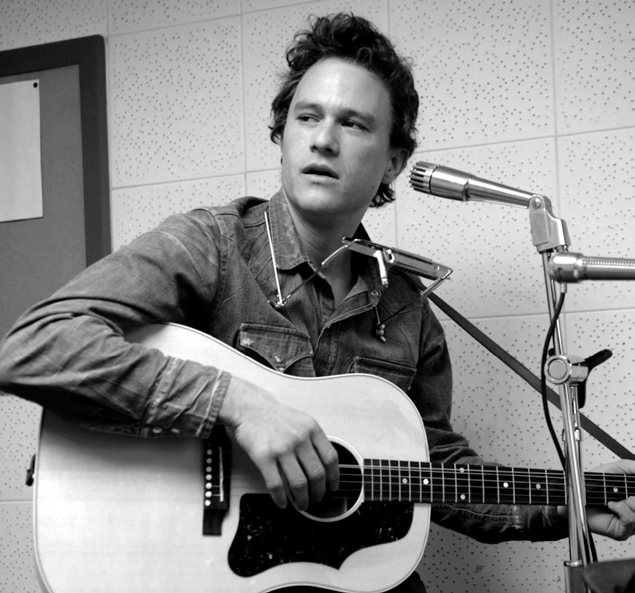
Discussing the use of multiple characters in I’m Not There, David L. Smith suggests:
Like a cubist portrait, the film presents its subject in a way that not only stresses the subject’s various aspects, but calls attention to itself as a work of representation. Its subject is not just what we are looking at, but how we see, or more to the present point, how we are as persons.[7]David L. Smith, ‘True, Valid Death Off a Movie Screen: Todd Haynes’ I’m Not There’, Journal of Religion and Film, vol.12, no. 2, 2008, <http://www.unomaha. edu/jrf/vol12no2/Smith_validDeath.htm>, accessed 10 September 2009.
Smith implies that Haynes’ aesthetic choice self-reflexively demonstrates that an individual (whether star musician or otherwise) is a symbol; ‘Bob Dylan’ is a fabricated identity and the musical individual is a mythical icon, able to be preserved in the contemporary feature film.
This article will explore the character Jude Quinn (Cate Blanchett), who could be considered the most significant of the Dylan personae in the film. The character both visually and sonically represents Dylan during the mid 1960s as he made the shift from acoustic to electronic music. Analysis of musical sequences including ‘Ballad of a Thin Man’ and ‘Maggie’s Farm’, as well as the composed score, will address how contemporary audiences perceive this period of Dylan’s life, over forty years later. In the female Blanchett, Haynes offers a unique casting choice to emphasise Dylan’s constantly changing image and establish a new interpretation of the reception of Dylan’s music at this time. Jude is a character that a wider span of film audiences can identify: elements of the character come from media representations (including documentaries and press conferences) of Dylan, some of them iconic moments. Haynes interprets Dylan as an undefinable icon of the 1960s through complex referencing systems and narrative structures. To add to the mystery that is Dylan, Haynes draws upon cinematic styles of the era that are not directly related to Dylan himself. Haynes enlists the aesthetic appeal of Federico Fellini to further contextualise the art of the decade and also to create a sense of detachment from reality.
Jude Quinn
The Dylan personae in I’m Not There bear no attempt to draw upon the historical or ‘actual’ Bob Dylan. The characters in the film represent previously constructed media ideologies of who Dylan is (as a star musician). In other words, I’m Not There re-represents media representations of Dylan so the myth of Dylan, created before the film’s release, extends to what can be referred to here as a hyper-myth. Haynes adds to the mythology of Dylan by perpetuating the myth in the film. Haynes is not focused on the actual Dylan (or attempts to reveal his identity); he is primarily concerned with the public/media memory of the popular musician and re-packages this memory in his biopic. Haynes states, ‘It’s really about how the creative process can begin through impersonation, how you want to be almost anything other than who you are.’[8]Rocco Passafuime, ‘Todd Haynes’, The Cinema Source, 18 January 2008, <http://www.thecinema source.com/celebrity/interviews/Todd-Haynes-Todd-Haynes-IS-there-to-talk-about-I-m-Not-There-interview-609-500.html>, accessed 10 September 2009.
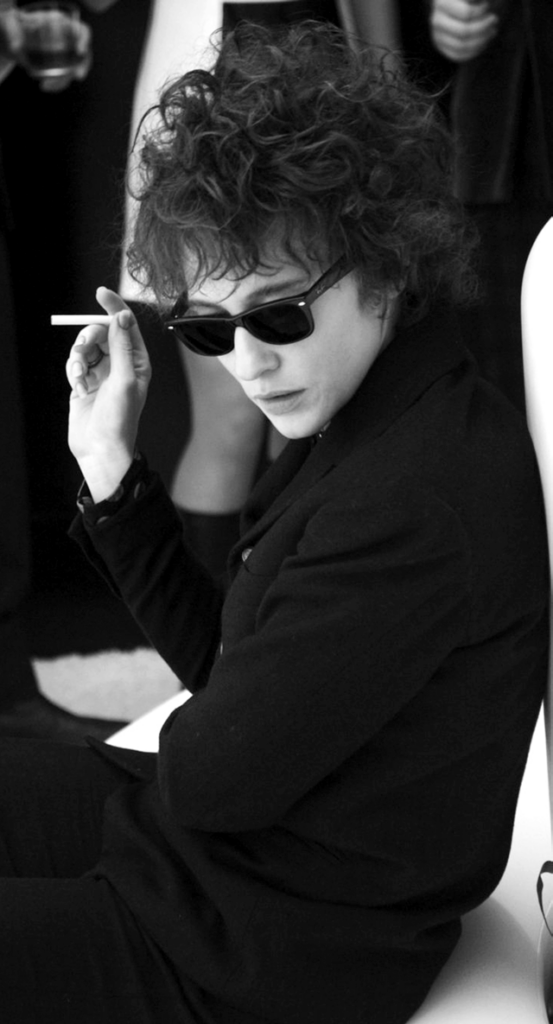
Jude physically and sonically resembles Dylan more than any character. Haynes suggests through Jude that Dylan is a symbol of his time and can be anyone he is imagined to be. Elements of Jude are based on events presented in Dylan’s self–directed documentary of his tour of the United Kingdom in 1966. Eat the Document (Bob Dylan, 1972), which has never had a theatrical or commercial release, contains several scenes that also appear in I’m Not There, signifying their importance to the fan and film viewer. There is one main incident in Eat the Document where an audience member at a concert calls Dylan a ‘Judas’. The event is so significant that it also appears in Martin Scorsese’s feature-length documentary No Direction Home (2005). Noel King observes:
There is a striking scene in No Direction Home when Dylan says with a mixture of artistic exasperation and ‘teacherly’ information to one of his English audiences, ‘It’s not British music, it’s American music, now c’mon.’[9]Noel King, ‘“The Entire Panorama of What America is to Me”: Dylan and the American Idiom’, Studies in Documentary Film, vol. 1, no. 1, 2007, p.36.
Jude speaks similar words in I’m Not There. After being jeered off stage during his performance, he speaks to the diegetic audience:
You know, what you’re hearing is not English music, all right, you haven’t heard American music before. What you’re hearing, I’m gonna say it right now, doesn’t have a name. It’s words, all right, it’s sounds. If it’s something you disagree with, that’s great.
Despite his explanation to the crowd that this is a new kind of music they have not previously encountered, Jude still does not seem to win their acceptance and is finally called a ‘Judas’ by an anonymous member of the audience. The word ‘Judas’ marks the entry of a particular composed theme, a non-diegetic piece that recurs throughout the film at particular points. It can be considered a leitmotif, a
short theme or musical idea consistently associated with a character, a place or an object, a certain situation or a recurrent idea of the plot … motifs are used, not as rigidly fixed melodies, but in a very flexible manner.[10]Willi Apel & Ralph T. Daniel, The Harvard Brief Dictionary of Music, Harvard University Press, Cambridge, MA, 1960, p.56.
The slow–paced reverberating electric guitar riff is attached to the crucial and significant events in Bob Dylan’s life, as represented through the narratives of the various personae. It plays when Jude’s true identity is revealed by Keenan Jones (Bruce Greenwood) on the television programme Culture Beat, and also after Jack Rollins presents his controversial speech at a dinner function. The leitmotif symbolises Dylan’s controversial identities in the film and emphasises that all the Dylan personae are connected to each other even though they do not interact with each other in the film. And even though each of the personae appears visually different, they all symbolise Bob Dylan.
After Jude’s real name, ‘Aaron Jacob Edelstein’, is revealed on Culture Beat, the musical leitmotif is paired with a visual montage of the Dylan personae at their most vulnerable when exposed through the media to the public. At the same time, the character of Arthur Rimbaud discusses creativity: how it can be misinterpreted, and can chain and follow an individual for the rest of their lives without ever changing. The use of the leitmotif in this sequence demonstrates that Bob Dylan is a musical individual who does not intend the public to reveal his private identity; he intends on maintaining a fabricated star persona throughout his career.
Haynes explains how and why the characters are revealed in his film:
All of these characters run the risk of being unmasked, each one of them, because they are all adopting a new guise, a new self, a new narrative that the artist is creating, but that means that he’s remarkably vulnerable to being discovered and that’s true for Dylan and it’s almost amazing to think of how shocked he would become when people would find him out or would reveal truths about his past that he was trying to make fuzzy or make much more mystical than he actually thought they were. But that felt like it was an important tension to carry through the whole film.[11]Sheila Roberts, ‘Todd Haynes Interview, I’m Not There’, Movies Online <http://www.moviesonline.ca/movienews_13495.html>, accessed 31 March, 2010.
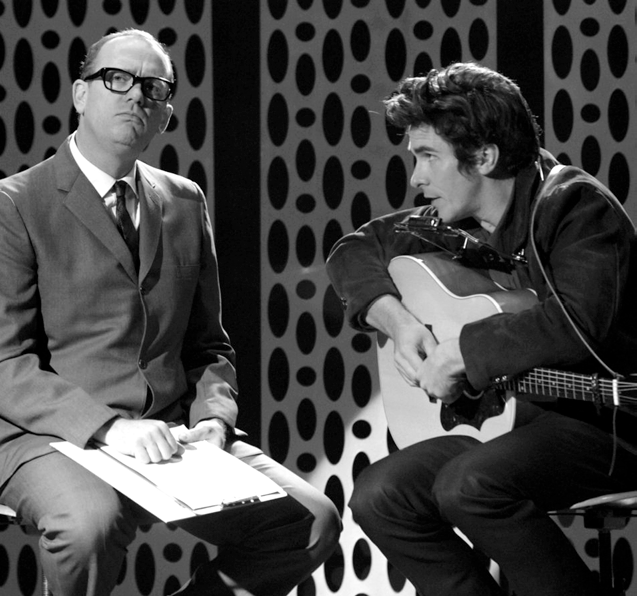
The leitmotif in I’m Not There is heard whenever the private life of a Dylan persona is announced or revealed through the media or a public forum. Dylan constantly re-invents himself (hence the presence of the electric guitar in the leitmotif, marking a change from acoustic to electric), which continually alters the public perception of him as a musician.
Through the character of Jude, Dylan is represented as a transgressive performer who constantly re-invents himself and has control over his own image, an image that is then reinterpreted by the media. No Direction Home highlights Dylan’s control over the media and the elements of his life that are accessible to the public. Peter Doyle notes that the Dylan to-camera interviews/material in the documentary were produced by Dylan and manager Jeff Rosen and were then passed on to Scorsese: ‘There was no direct interrogation of Dylan, friendly or otherwise’ and furthermore ‘everything else in the film positions itself around the artefact’.[12]Peter Doyle, ‘Citizen Dylan’, Studies in Documentary Film, vol. 1, no. 1, 2007, p.68. In a sense, Haynes affords Dylan the same respect by not giving any of the Bob Dylan personae the character name of ‘Bob Dylan’. The character names relay the notion that Dylan does not intend that, and (to a certain extent) refuses to let, the audience/fan be aware of every part of his life. Larry Gross, a screenwriter who attended the premiere screening of No Direction Home at the Telluride Film Festival in September 2005 suggests that Dylan can be compared to Lawrence (Peter O’Toole) in Lawrence of Arabia (David Lean, 1962). In noting Gross’ comparison, Greil Marcus states that like Dylan, ‘Lawrence, without ever losing his uniqueness or, in contrast, ever truly revealing himself, becomes the emblematic figure of his age.’[13]Greil Marcus, ‘The World Premiere of “No Direction Home”’, Studies in Documentary Film, vol. 1, no. 1, 2007, p.50. This is not implying that Lawrence is the closest point of reference to Dylan; it is a useful comparison to relay the point that Dylan has developed an enigmatic star persona. Without disclosing his personal life to the public/media, Bob Dylan has become a popular and successful musician.
Ballad of a Thin Man/Maggie’s Farm
In a scene from the documentary Don’t Look Back (D.A. Pennebaker, 1967)[14]A feature-length documentary that follows Bob Dylan’s 1965 tour of England. a Time magazine correspondent questions whether Dylan cares about what he says. Dylan replies:
How can I answer that if you have the nerve to ask me? You’ve got a lot of nerve asking me a question like that. Do you ask the Beatles that? I don’t question you because I don’t expect any answer from you.
This moment is reinvented in I’m Not There. Jude is in the backseat of his car, being interviewed by Keenan Jones, the character who questions and inevitably reveals Jude’s true identity, his past and his family on national television. The idea that Jude only wants to disclose information about his personal life to the public represents Dylan’s control over the media. When Jones unmasks Jude on television, Jude reacts by typing up what becomes his book of poetry Tarantula,[15]Bob Dylan, Tarantula, Scribner, New York, 1971 that he works on all through the night as his friends sleep.
Even though his identity has been revealed, he keeps creating new identities through his creative work. Dylan’s ‘Ballad of a Thin Man’[16]Bob Dylan, Highway 61 Revisited, Columbia, 1965. plays as a reflection on the relationship between these two characters, and as George Johnston suggests:
There is one of Bob Dylan’s songs they keep playing and replaying [in I’m Not There], a kind of esoteric diatribe against a certain ‘Mister Jones’ who seems to symbolize the ‘oldies’ and ‘squares’ of my generation and the hoarsely reiterated refrain is taunting. ‘Something is happening here and you don’t know what it is – do you. Mr Jones?’[17]George Johnston, Clean Straw for Nothing, Collins, London, 1969, p.101.
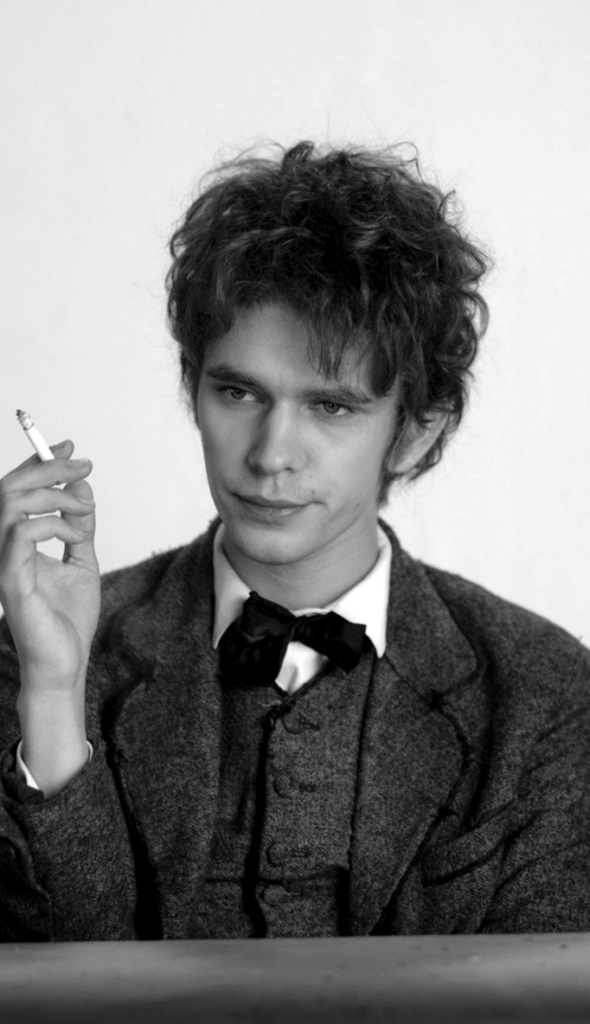
Jones first appears in the back of a car interviewing Jude in the presence of Sonny Dover (Joe Cobden). Jones asks Jude what he thinks about social and political issues arising out of his music and if he genuinely cares about the music/issues. Jude replies by saying that he is just a storyteller, that he does not need to answer his questions. After Jones continues to presses Jude about whether he cares about what he sings each night, Jude reacts by exiting the car and we hear ‘Ballad of a Thin Man’. After his argument with Jude, Jones enters a men’s bathroom and is seemingly confused, standing at a urinal. He sees himself washing his hands at the basin and then sees himself naked, walking into a toilet cubicle. As Jones exits, he glances above an elevator and notices that the arrow changes rapidly between levels. The elevator sequence coincides with the first verse of the song:
You walk into the room
With your pencil in your hand
You see somebody naked
And you say, ‘Who is that man?’
You try so hard
But you don’t understand
Just what you’ll say
When you get home
Jones leans over and finds Jude standing on a stage singing the chorus of the song – the lyrics that Johnston mentions. These lyrics taunt Jones in the musical sequence and assist Jones to become aware of his own perspective on social and political issues. As the song plays, Jones finds that he is sitting down in the audience watching a man in a cage who is killing live chickens. Jones then becomes the caged performer and is laughed at and humiliated by the audience. Jude appears and hands a microphone to Jones, which suggests that Jude would like Jones to be in his position – to see what it is like from the other side, from Jude’s perspective. Wilfrid Howard Mellers suggests that
There have been many specific identifications of Mr Jones and none of them matters. We need recognize only that he’s the (fairly) respectable man in the street, and possibly you or I. He might even be Dylan himself, for the singer is no longer outside his victim.[18]Wilfrid Howard Mellers, A Darker Shade of Pale: A Backdrop to Bob Dylan, Faber and Faber, London, 1984, p.141–2.
With the shifting placement of Jones, who continually stands in the place of other characters in the sequence, Dylan’s lyrics, paired with the visual aesthetics, reaffirm that ‘Mr Jones’ (although an identifiable individual character in the film) can be anyone, including Dylan.
There is also a moment in this sequence where a group of African American men stop the recording from their cassette tape and discuss the socio–political meanings in the song, that all people should have equal power and control over their own lives regardless of their race. The ‘Ballad of a Thin Man’ sequence demonstrates that even though a musical biopic seems to focus on one life, this type of film tends to encompass larger socio-political issues into the narrative. Other musical biopics such as Ray (Taylor Hackford, 2004), Hilde (Kai Wessel, 2009) and De-Lovely (Irwin Winkler, 2004) also concentrate on ‘big picture’ issues/events, specifically relating to racism (segregation in the US), war (Second World War) and homosexuality respectively. The contextualisation gives the individual a place not only in music history but also in cultural history. The musical biopic represents the individual in a specific era and location, exemplifying the morals and political positions of the society. Many contemporary musical biopics display how socio-political issues of the period affect an individual’s creation of music. This is particularly important in the representation of Bob Dylan because much of his music is based is social commentary; indeed his protests songs are referred to in I’m Not There as ‘finger-pointing’ songs.
A society’s morals and values, reflected in aesthetic appeal, is represented in audience/fan reactions to Dylan’s music in I’m Not There, especially when he performs his first electric amplified music, which commences with ‘Maggie’s Farm’.[19]Bob Dylan, Bringing It All Back Home, Columbia, 1965. The sequence begins in silence (as the band assembles on stage) other than the faint sound of audience applause that can be heard as Jude is introduced. As Jude and the band begin to play the electric blues song, the crowd immediately shifts in mood (by shouting, heckling and verbally condemning the music) to reflect distaste and anger that Dylan has ‘gone electric’. It is at this point that various fans directly address the film camera and discuss how disappointed they are in Jude. The incident is based on Dylan’s appearance at the Newport Folk Festival on 25 July 1965, a significant event that been discussed by Robert Shelton,[20]Robert Shelton, No Direction Home: The Life and Music of Bob Dylan, William Morrow and Company, New York, 1986. Mike Marqusee[21]Mike Marqusee, Wicked Messenger: Bob Dylan and the 1960s, Seven Stories Press, New York, 2005. and featured in a documentary titled The Other Side of The Mirror: Bob Dylan at the Newport Folk Festival (Murray Lerner, 2007). The scene in I’m Not There (and the event in general) demonstrates how audiences can be influenced not only by the lyrics of a song but also how the song is performed – both can change the perception of a musician’s compositions.
Federico Fellini and the audio–visual aesthetic
Besides Dylan’s featured music,[22]There are thirty-nine credited Bob Dylan songs in the film, of which Dylan himself performs twenty-two (referenced in I’m Not There end credits). other artists’ songs appear throughout I’m Not There. One in particular is Nino Rota’s ‘Venusia O Venezia, Venaga’, from the soundtrack to Il Casanova Di Federico Fellini (Federico Fellini, 1976). When used in I’m Not There, it plays as a leitmotif to signify fabricated events. The music complements to the illusory state developed by Fellini in Il Casanova and 8 ½ (1963). The song appears in the scene where Jude sees Coco Rivington (Michelle Williams) emerging from the garden and also when Jude meets Allen Ginsberg (David Cross) for the first time. In the latter scene, Ginsberg and his partner are riding in a golf cart and accelerate to meet Jude face to face while travelling on the road. Jude and Ginsberg briefly discuss the media attention that Jude has received and what Jude’s future intentions are. Haynes admits in his director commentary that the meeting between Ginsberg and Dylan (Jude) is unlikely to have happened this way but it is how Haynes fantasised it would have occurred.
The cinematic techniques of Federico Fellini are borrowed in I’m Not There to represent Dylan’s own imagination and consciousness. In a dream sequence in 8 ½ a man holds a rope that is attached to another man’s leg that is floating in the air like a kite. Similar imagery is used in I’m Not There where Jude becomes ill from overworking. He lies on his back while his friends look upon him and the scene immediately shifts to Jude floating in the air, with rope tied to his ankle. The Dylan song ‘I’m Not There’[23]The song is performed non-diegetically twice, by Bob Dylan and Sonic Youth, and the recordings have only been officially released on the I’m Not There soundtrack (Columbia, 2007). plays in the background as Arthur (in voice-over) states that ‘the only truly natural things are dreams, which nature cannot touch with decay.’ Paying homage to Fellini’s vision, the dream sequence presents Jude confronting and accepting himself by means of his individual dream–state as opposed to viewing himself through as others do, including the general public and fans.
Haynes points out that he did not intend film audiences to make the connection between Fellini (including Rota’s music) and Bob Dylan:
I tried to find cinematic references from the 60’s and did use that as primary background for his [Dylan’s] most fertile period. That period formed him and I feel all these core identities that reside there came from the 60’s era, even if that sort of spills into the 70’s. I’ve tried to find cinematic and visuals motifs and stylistic language that got to the core of the music, including the musical themes and genres he was doing, which is why for instance when people say the Jude section is like Don’t Look Back, I’m like ‘No! It’s Fellini!’ (laughs). I don’t expect them to get that it’s Fellini necessarily, but the music of Dylan’s albums Blonde On Blonde and Highway 61 Revisited is not social realist music at all or cinema vérité music, which is what Don’t Look Back is. It’s this baroque, distorted, highly stylized and yet witty, urbane, ironic music and language and that’s what you see in 8 ½ played out perfectly.[24]Jessie Emkic, ‘We Are Not There: Interview with Todd Haynes’, The Transport, <http://the-transport.blogspot.com/2008/10/we-are-not-there-interview-with-todd.html>, accessed 1 April 2010.
Haynes chose to adopt and represent Fellini’s audio-visual style to reinforce the mood and character conveyed through Dylan’s music and persona during the 1960s.
Another example is an outdoor scene in 8 ½ where men and women assemble in a garden, listening to classical music, some sitting on long white chairs. These chairs are replicated for I’m Not There where Jude is approached by Keenan Jones. The scene commences with a woman trying to locate Jude for an interview but not being able to find him. The camera pans down the garden. Women gaze down at the film camera, sipping on cocktails. The character Sonny Dover sits on one of the long white chairs, explaining to the woman that Jude is with the Beatles (perhaps a reference to the popular Beatles song ‘Hey Jude’ that was released in 1968). There are several reasons why the sequence was shot Fellini-style. One is that it is a tribute or homage to the film that was released during the 1960s (specifically in 1963), and secondly it heighten the dream/fantasy-like atmosphere. The scenes play with reality and fiction, making it more difficult for the film viewer to distinguish what is real and what is imagined. The daydream-like state of the sequence reaches its pinnacle when Jude hears Coco’s[25]Coco is a representation of Edie Sedgwick (an actress known for her appearances in the films of Andy Warhol), who is believed to have had a short–term relationship with Dylan. voice emerging from the surrounding gardens stating, ‘You might think nothing can reach those tens of thousands living by the dollar but you’d be wrong.’ Jude follows Coco into the gardens until she finally disappears. Jude begins to cough on his cigarette, which in turn pushes him back into reality and the fantasy sequence concludes. The whole Fellini-inspired section of the film also emphasises the ambiguity regarding certain relationships in Dylan’s life.[26]The relationship between Sedgwick and Dylan is also represented in the film Factory Girl (George Hickenlooper, 2006) where Edie (Sienna Miller) has a short relationship with a folk musician (Hayden Christensen) who is never referred to by name during the film and is finally credited as the ‘musician’.
The future of the musical biopic
Overall, I’m Not There draws upon a multitude of different media texts and music in order to represent the disjointed life story/s of Bob Dylan. The interweaving of multiple narrative structures paired with popular music and composed score highlights the complex nature of the individual represented. The film is specifically designed for the Bob Dylan fan, or ‘the Dylanologist’, as some Dylan songs that appear in the film are obscure (such as B-sides) and previously unreleased, including the song from which the film takes its name. Due to its disjointed narrative structures, the biopic is open to various interpretations and becomes increasingly comprehensible with multiple viewings. In his refusal to recycle the simple linear narrative structure of other contemporary music biopics, such as box office successes Walk the Line (James Mangold, 2005) and Ray, Todd Haynes questions and pushes the boundaries of the genre. On the issue of structure, he says:
I do see that there is a kind of form that has become common to film that we now call the bio-pic, but I don’t know that it has any relationship to reality or anything literal or historical. It seems to be a construct of the narrative form that has to find beats in a person’s life to dramatize, events of the life that correspond to those moments of high and low and that have a relationship to their work. They are usually required to expose a certain amount of private history or conflict with drugs or philandering or something, and then show how that gets recovered or resolved. So to me, it’s a formula, almost more nakedly so than other film genres because whatever the life is has to fit in this one package.[27]Sean Axmaker, ‘Todd Haynes and a Whole Slew of Dylans’, Green Cine, 6 May 2008, <https://www.greencine.com/central/toddhaynes>, accessed 1 April, 2010.
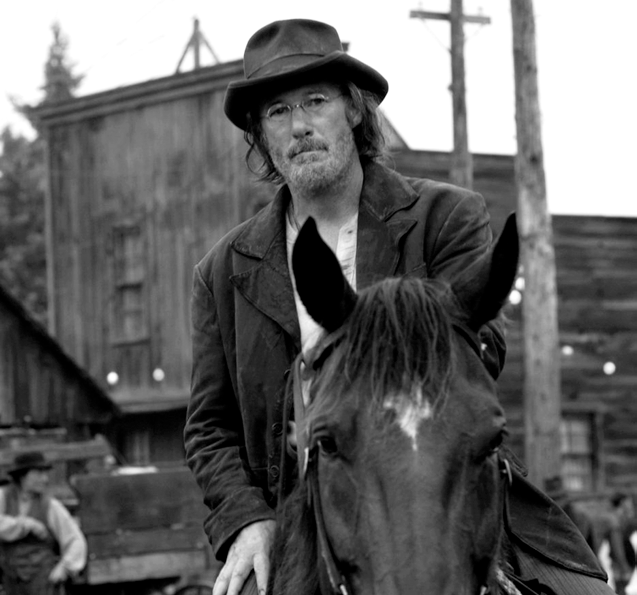
In I’m Not There Haynes discards the biopic formula in order to create a self-reflexive standpoint on this subgenre of the musical film. Haynes suggests through multiple representations of Dylan that these biographical films are unable to be accurate representations of a life history due to limited access to the star figure. Access to popular musical individuals is through subjective texts (including magazine interviews, unauthorised biographies and television appearances) which are then re-represented in the musical biopic. I’m Not There is consciously aware of its ambiguity through re-representations of the musician, which, in turn, mythologises the myth of Bob Dylan.
This article was refereed.
Endnotes
| 1 | Bob Dylan, Chronicles: Volume One, Simon & Schuster, London, 2004, p.20. |
|---|---|
| 2 | A ‘biopic’ is simply a biographical film. A musical biopic is defined here as a film that focuses on an individual associated with music. Individuals include musicians, composers, singers and performer/entertainers. |
| 3 | Musical biopics released during the boom include Ray (Taylor Hackford, 2004), De-Lovely (Irwin Winkler, 2004), Walk the Line (James Mangold, 2005) and Beyond the Sea (Kevin Spacey, 2004) in Hollywood alone. |
| 4 | Shawn Levy, ‘Interview: Todd Haynes on “I’m Not There”’, OregonLive.com, 18 November 2007<http://blog.oregonlive.com/madaboutmovies/2007/11/interview_todd_haynes_on_im_no.html>, accessed 9 September 2009. |
| 5 | op. cit. |
| 6 | Bob Dylan, The Times They are A Changin’, Columbia, 1964. The album also features songs such as ‘Only a Pawn in Their Game’ and the album title song that Jack Rollins performs in the film. |
| 7 | David L. Smith, ‘True, Valid Death Off a Movie Screen: Todd Haynes’ I’m Not There’, Journal of Religion and Film, vol.12, no. 2, 2008, <http://www.unomaha. edu/jrf/vol12no2/Smith_validDeath.htm>, accessed 10 September 2009. |
| 8 | Rocco Passafuime, ‘Todd Haynes’, The Cinema Source, 18 January 2008, <http://www.thecinema source.com/celebrity/interviews/Todd-Haynes-Todd-Haynes-IS-there-to-talk-about-I-m-Not-There-interview-609-500.html>, accessed 10 September 2009. |
| 9 | Noel King, ‘“The Entire Panorama of What America is to Me”: Dylan and the American Idiom’, Studies in Documentary Film, vol. 1, no. 1, 2007, p.36. |
| 10 | Willi Apel & Ralph T. Daniel, The Harvard Brief Dictionary of Music, Harvard University Press, Cambridge, MA, 1960, p.56. |
| 11 | Sheila Roberts, ‘Todd Haynes Interview, I’m Not There’, Movies Online <http://www.moviesonline.ca/movienews_13495.html>, accessed 31 March, 2010. |
| 12 | Peter Doyle, ‘Citizen Dylan’, Studies in Documentary Film, vol. 1, no. 1, 2007, p.68. |
| 13 | Greil Marcus, ‘The World Premiere of “No Direction Home”’, Studies in Documentary Film, vol. 1, no. 1, 2007, p.50. |
| 14 | A feature-length documentary that follows Bob Dylan’s 1965 tour of England. |
| 15 | Bob Dylan, Tarantula, Scribner, New York, 1971 |
| 16 | Bob Dylan, Highway 61 Revisited, Columbia, 1965. |
| 17 | George Johnston, Clean Straw for Nothing, Collins, London, 1969, p.101. |
| 18 | Wilfrid Howard Mellers, A Darker Shade of Pale: A Backdrop to Bob Dylan, Faber and Faber, London, 1984, p.141–2. |
| 19 | Bob Dylan, Bringing It All Back Home, Columbia, 1965. |
| 20 | Robert Shelton, No Direction Home: The Life and Music of Bob Dylan, William Morrow and Company, New York, 1986. |
| 21 | Mike Marqusee, Wicked Messenger: Bob Dylan and the 1960s, Seven Stories Press, New York, 2005. |
| 22 | There are thirty-nine credited Bob Dylan songs in the film, of which Dylan himself performs twenty-two (referenced in I’m Not There end credits). |
| 23 | The song is performed non-diegetically twice, by Bob Dylan and Sonic Youth, and the recordings have only been officially released on the I’m Not There soundtrack (Columbia, 2007). |
| 24 | Jessie Emkic, ‘We Are Not There: Interview with Todd Haynes’, The Transport, <http://the-transport.blogspot.com/2008/10/we-are-not-there-interview-with-todd.html>, accessed 1 April 2010. |
| 25 | Coco is a representation of Edie Sedgwick (an actress known for her appearances in the films of Andy Warhol), who is believed to have had a short–term relationship with Dylan. |
| 26 | The relationship between Sedgwick and Dylan is also represented in the film Factory Girl (George Hickenlooper, 2006) where Edie (Sienna Miller) has a short relationship with a folk musician (Hayden Christensen) who is never referred to by name during the film and is finally credited as the ‘musician’. |
| 27 | Sean Axmaker, ‘Todd Haynes and a Whole Slew of Dylans’, Green Cine, 6 May 2008, <https://www.greencine.com/central/toddhaynes>, accessed 1 April, 2010. |


